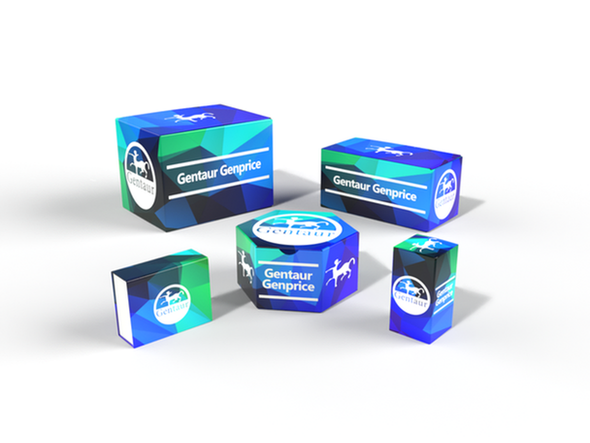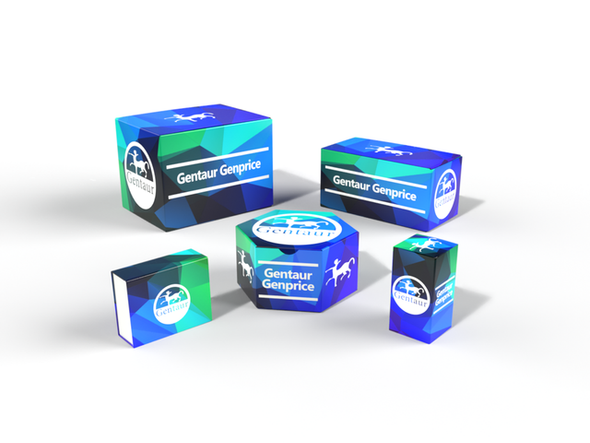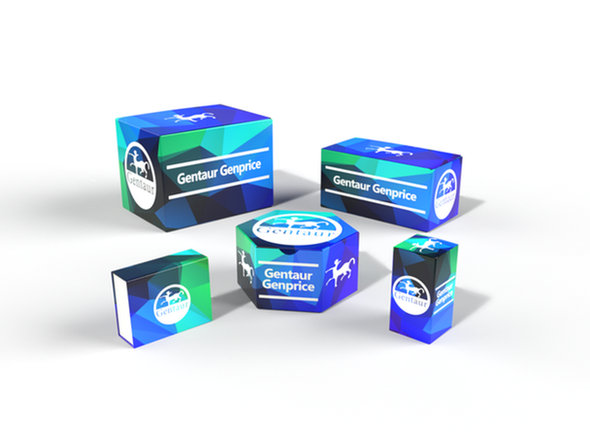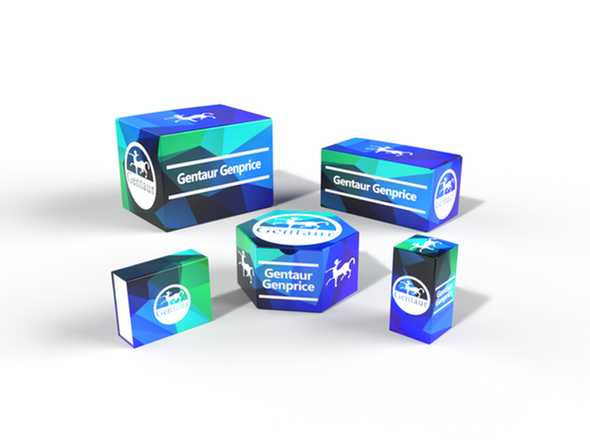Description
AF9 Antibody | 62-163 | Gentaur UK, US & Europe Distribution
Host: Rabbit
Reactivity: Human
Homology: Predicted species reactivity based on immunogen sequence: Mouse
Immunogen: This AF9 (MLLT3) antibody is generated from rabbits immunized with a KLH conjugated synthetic peptide between 471-502 amino acids from the C-terminal region of human AF9 (MLLT3) .
Research Area: Other
Tested Application: WB, IHC-P
Application: For WB starting dilution is: 1:1000
For IHC-P starting dilution is: 1:50~100
Specificiy: N/A
Positive Control 1: N/A
Positive Control 2: N/A
Positive Control 3: N/A
Positive Control 4: N/A
Positive Control 5: N/A
Positive Control 6: N/A
Molecular Weight: 63 kDa
Validation: N/A
Isoform: N/A
Purification: This antibody is prepared by Saturated Ammonium Sulfate (SAS) precipitation followed by dialysis
Clonality: Polyclonal
Clone: N/A
Isotype: Rabbit Ig
Conjugate: Unconjugated
Physical State: Liquid
Buffer: Supplied in PBS with 0.09% (W/V) sodium azide.
Concentration: batch dependent
Storage Condition: Store at 4˚C for three months and -20˚C, stable for up to one year. As with all antibodies care should be taken to avoid repeated freeze thaw cycles. Antibodies should not be exposed to prolonged high temperatures.
Alternate Name: Protein AF-9, ALL1-fused gene from chromosome 9 protein, Myeloid/lymphoid or mixed-lineage leukemia translocated to chromosome 3 protein, YEATS domain-containing protein 3, MLLT3, AF9, YEATS3
User Note: Optimal dilutions for each application to be determined by the researcher.
BACKGROUND: The human AF9 gene is one of the most common fusion partner genes with the ALL1 gene at 11q23 (also called MLL) , resulting in the t (9;11) (p22;q23) . The AF9 gene is more than 100 kb, and 2 patient breakpoint cluster regions (BCRs) have been identified; BCR1 is within intron 4, previously called site A, whereas BCR2 or site B spans introns 7 and 8. Several different structural elements have been identified in AF9, including a colocalizing in vivo DNA topo II cleavage site and an in vitro DNase I hypersensitive (DNase 1 HS) site in intron 7 in BCR2. Reversibility experiments demonstrated a religation of the topo II cleavage sites. In addition, 2 scaffold associated regions (SARs) are located centromeric to the topo II and DNase I HS cleavage sites and border breakpoint regions in 2 leukemic cells lines: SAR1 is located in intron 4, whereas SAR2 encompasses parts of exons 5-7. The patient breakpoint regions of AF9 share the same structural elements as the MLL BCR. A DNA breakage and repair model for nonhomologous recombination between MLL and its partner genes, particularly AF9, has been proposed.






![AF9 (MLLT3) Antibody (Center V422) [APR32251G] AF9 (MLLT3) Antibody (Center V422) [APR32251G]](https://cdn11.bigcommerce.com/s-1rdwiq712m/images/stencil/590x590/products/63394/63698/gentaur-genprice__26005.1661610467__29809.1661628092__75433.1661676199__77988.1661684280__64362.1661692443__04549.1661866732.png?c=1)
![AF9 (MLLT3) Antibody (C-term K486) [APR32250G] AF9 (MLLT3) Antibody (C-term K486) [APR32250G]](https://cdn11.bigcommerce.com/s-1rdwiq712m/images/stencil/590x590/products/63393/63697/gentaur-genprice__26005.1661610467__29809.1661628092__75433.1661676199__77988.1661684280__64362.1661692443__20718.1661866729.png?c=1)


